The F-35 Lightning II Joint Strike Fighter, the military’s most expensive weapons system ever, continues to be plagued by a lack of parts for its F135 engines, which cost roughly $12 million a piece, and the people and places to fix them. While improvements to these problems are slowly being made, there are clearly deeply-seated systemic issues at play.
And as the Pentagon considers whether to update the engines or purchase new ones to meet the demands of the future, just keeping the existing ones operating will cost taxpayers billions of additional dollars. This is on top of a program already expected to exceed $1.7 trillion over the anticipated 66-year lifecycle of the F-35s’ production – with a projected full fleet of roughly 2,500 aircraft.
This week, in yet another scathing report, the Government Accountability Office (GAO) reiterated the net effect of the military’s struggles with the F135 jet engine made by Pratt & Whitney. In February, 36 of the fleet of about 450 F-35s – or about 8% – were unable to fly because they had no working engine.
That figure is actually an improvement since January, when about 40 of the 5th generation stealth fighters were shelved for lack of an engine. But GAO reported on a series of cascading problems with spare parts, labor, maintenance depots, and a disagreement between the F-35 Joint Program Office and Pratt & Whitney over how to forecast spare parts requirements, that, combined, could mean greater trouble over the next decade that will take even more money to fix.

“DOD developed a sustainment strategy unique for the F-35 engines in an attempt to balance affordability and performance,” GAO reported. “However, this sustainment strategy does not meet some key operational desired outcomes of the military services, such as having sufficient numbers of aircraft with operating engines available to perform missions. DOD has also not assessed and updated its strategy to address those desired outcomes or reflect additional challenges, such as growing sustainment costs and options for modernizing the engine.”
Concerns about the F-35 are not new. Senior U.S. military officials, as well as individuals from other arms of the U.S. government, have long been critical of the program and its management, and for good reason, too. It’s in an issue we examined here, for instance, in the wake of an investigation into then-Acting Defense Secretary Patrick Shanahan, a former Boeing executive who criticized the F-35 program in 2019.
And even before the latest issues with the F135 engine, questions arose about why the DOD decided to end competition for an alternative engine.
Modular Makeup
The Joint Strike Fighter was so named because it is flown by the Air Force, Marine Corps and Navy, which all have the same basic engine design with some variations to support the short take-off and vertical landing capability for the F-35B model flown by the Marines.

The F-35A Air Force variant and F-35C Navy variant have the same engine with four modules: fan, power, augmentor, and nozzle. The gearbox module is included in the power module. The F-35B’s engine also has four main engine modules, though the power, augmentor, and nozzle modules have F-35B specific parts and features that enable short takeoff and vertical landing operation, in addition to the F-35B unique lift-fan system made by Rolls Royce.
In addition to the modules, there are two types of spare parts used to sustain the engine. There are line-replaceable engine components that can be removed and replaced at the field level and there are modules that require depot maintenance. There are also parts that maintenance personnel use to repair and overhaul engine modules during depot maintenance. During depot maintenance, personnel disassemble engine modules, inspect them and replace old parts with new parts as necessary, and then reassemble the module.
A Different Animal
The DOD’s F-35 engine sustainment strategy differs considerably from what was developed for other fighter aircraft engines—specifically the engines for the Air Force’s F-16 Fighting Falcon and F-22 Raptor and the Navy’s F/A-18E/F Super Hornets, GAO reported.
The DOD aimed to balance the performance of the F-35 and its engine with the affordability of sustainment, according to DOD, military service, and Pratt & Whitney officials interviewed by GAO.
Unlike Air Force and Navy sustainability strategies for its other fighter aircraft engines, the DoD has decided to use a “mission-capable due to engine” metric for the F-35 – a goal of having no more than 6% of its fleet unable to fly for lack of an engine. The other services calculate a spare engine inventory requirement for the other fighters.
“DOD has contracted with Pratt & Whitney to achieve this goal and DOD made investments in the F-35 engine program based on this goal,” GAO reported. “For example, DOD’s and Pratt & Whitney’s decisions regarding the required number of each type of module for its inventory and the necessary depot maintenance facilities, personnel, and equipment to repair the modules were informed by this goal, according to officials.”

However, if a lower non-mission capable due to engine rate were desired, “then DOD and Pratt & Whitney would need to increase the number of modules in DOD’s inventory and/or increase its ability to repair modules at its depots.”
The good news would be that both those actions — individually and combined— “generally would increase the availability of modules, resulting in fewer aircraft being without an operable engine.”
The bad news though, is “taking these actions to achieve a lower non-mission capable due to engine rate would result in additional costs for sustaining the F-35 engine.”
Air Force and Navy officials told the GAO they take a different sustainment approach for their other fighter aircraft engines.
“They calculate a spare engine inventory requirement — as well as a breakdown of the number of engines that need to be ready for use within that inventory — to help ensure that aircraft will be available to meet desired mission outcomes.”
Thus, if an aircraft’s engine needs repair beyond what maintenance is able to be conducted at the field level, “there is typically an operating spare engine available to replace the inoperable engine.”
There are other differences as well.
The F-35 program “has limited spare engines,” GAO found.
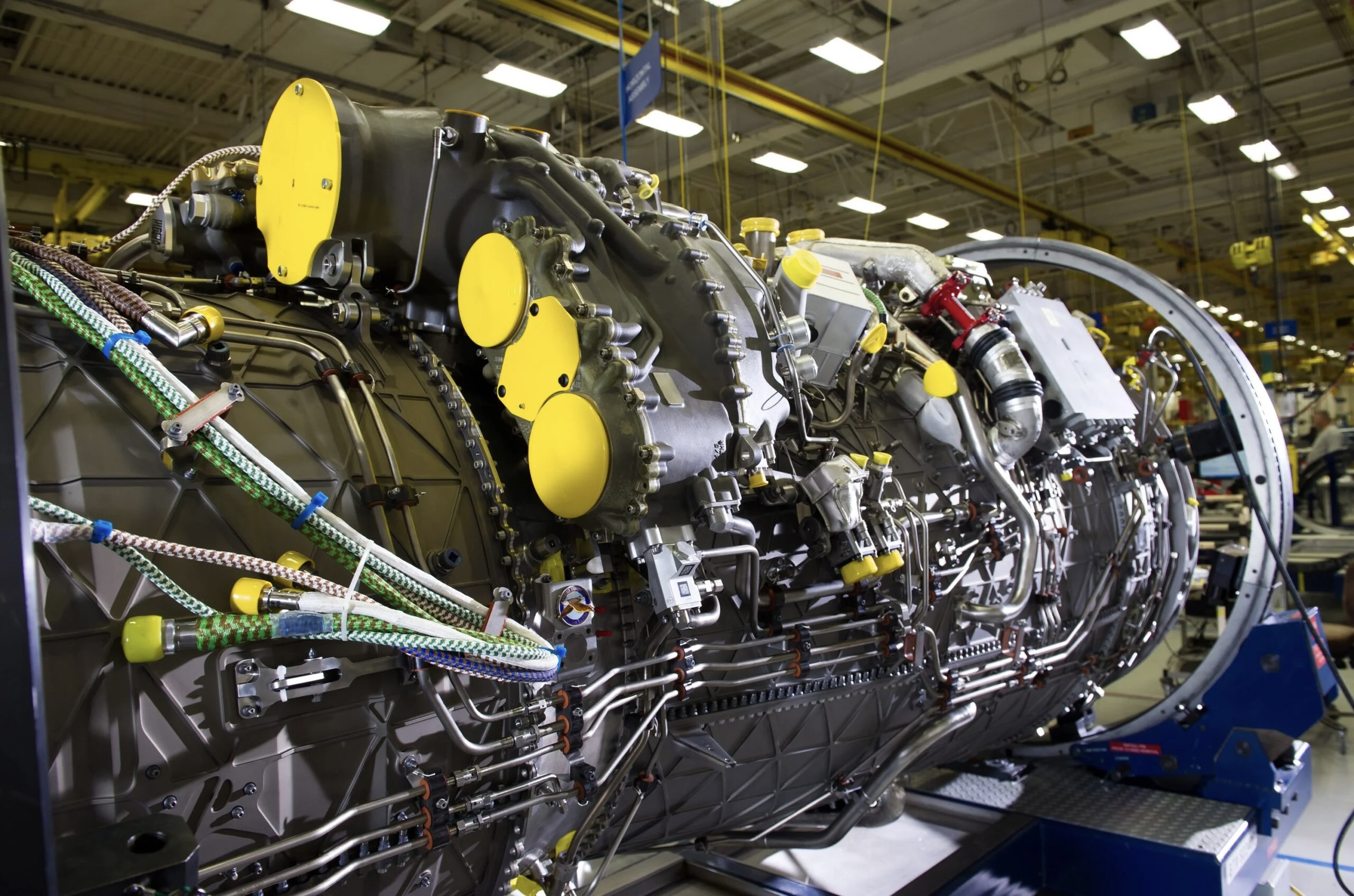
That modular nature of the engine allows components to be removed and replaced without having to replace the entire engine.
Program officials told GAO that this strategy resulted in the F-35 having fewer spare engines than other programs since individual modules can be replaced.
“However, according to officials, this approach necessitates that the F-35 program have a sufficient number of engine modules, and associated depot repair capacity — i.e the personnel, facilities, and support equipment to repair modules to meet demand — to meet the 6% goal.”
If the F-35 program does not maintain “the optimal number of each type of engine module along with the corresponding depot repair capacity, then the program will experience module shortages that will negatively affect engine and aircraft readiness.”
That’s exactly what happened in mid-2020, when the F-35 program was unable to repair power modules quickly enough, resulting in an increasing shortage of power modules.
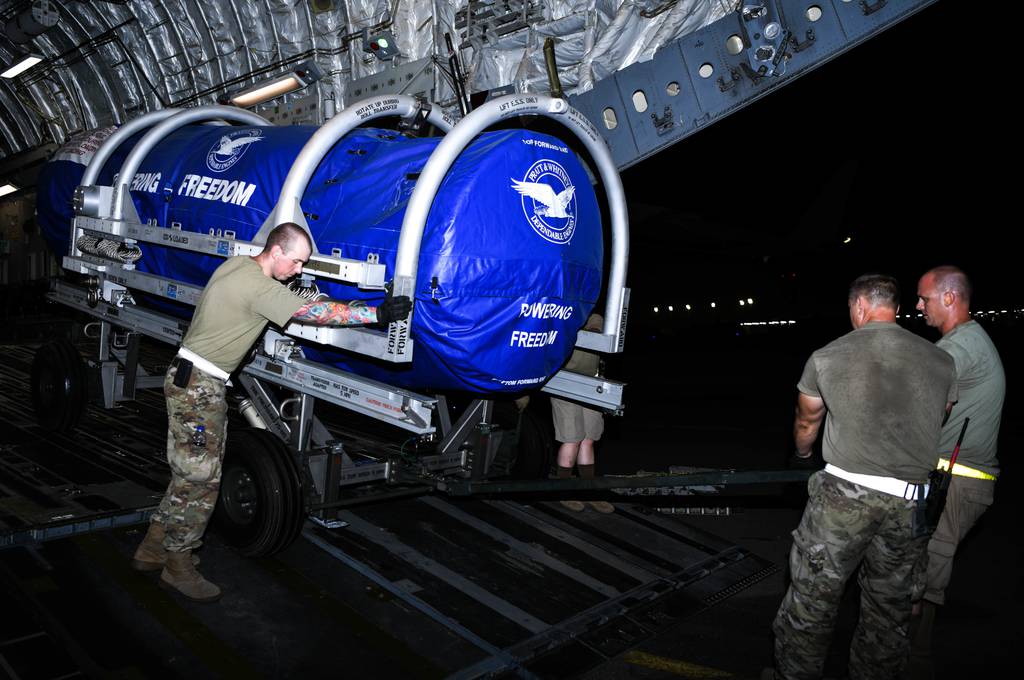
“This led to non-mission capable due to engine rates over 9 percent in February 2022 for the entire fleet of F-35s, including all variants.”
In contrast, Air Force and Navy officials told GAO that the F-16, F-22, and F/A-18 E/F programs designed their engine sustainment strategies to ensure they have a certain number of spare engines designated to meet their wartime needs.
“Service officials stated that these programs plan to ensure a ready supply of spare engines, commonly referred to as war readiness engines, and work to ensure sufficient sustainment resources—depot capacity and spare parts—to support the services’ war readiness engine requirements.”
As a result, “these aircraft engine programs have invested additional funding to ensure an engine supply safety net so that aircraft almost always have an operable engine.”
Overall, the differing engine sustainment approaches between the F-35 and other U.S. fighter jets “has resulted in the number of Air Force F-16 and F-22 aircraft and Navy F/A-18 E/F aircraft considered non-mission-capable due to engine generally being 1 percent or lower since 2017, according to service officials.”
Even with the previously noted overall performance improvement, the F-35 is nine times more likely to be unable to fly due to lack of an engine, according to the latest figures compiled by GAO.
“DOD’s sustainment strategy for the F-35 engine does not meet the desired outcomes of the military services,” GAO found. “As a result, each military service either has taken steps or is in the process of taking steps, such as purchasing additional spare engines or modules, to improve their availability of operating engines. These actions have resulted in additional costs for F-35 sustainment. The military service officials told us that a goal of no more than 6% for the non-mission capable due to engine rate—even if met—would not allow the military services to effectively support National Defense Strategy missions, such as those related to China and Russia.”
Power Module Problems
The DOD goal that no more than 6% of F-35s be non-mission capable due to lack of an engine includes goals for three components:
• a 1% goal for F-35s unable to fly because non-module engine parts are removed and replacement parts are not available;
• a 4% goal for F-35s unable to fly because a module of the engine needs replacing and is not available;
• a 1% goal for F-35s unable to operate due to a maintenance issue.
While the DOD has been meeting the supply parts goal, it has not met either the module or maintenance goals, GAO reports.

“The increase in the rate of aircraft that are designated as non-mission capable due to engine is primarily due to the lack of operating modules, specifically the power module, and reliability issues with line replaceable components that have driven increased organizational-level maintenance.”
The module supply problem is actually getting worse. GAO reports that the F-35 engine’s non-mission capable rate due to the supply of modules has increased since June 2020, and has not met its goal of 4% since April 2021.
In fact, as of February 2022, “the lack of available power modules was the number one driver of non-mission-capable aircraft. Engine modules sent to depot have taken significantly more time to repair than planned.”
The F-35 Joint Program Office has a goal for depots to repair engine power modules in 122 days. However, in October 2020, the repair turnaround time—the time required to return an item to use after removal—for a power module was nearly twice that, at about 200 days.
According to DOD officials, the 122-day goal was based, in part, “on DOD and Pratt & Whitney assumptions about the extent of necessary repairs when an engine went to depot for maintenance. The repair turnaround time has been higher than expected for two primary reasons.”
The first is that the Heavy Maintenance Center at Tinker Air Force Base – where most major F-35 engine repairs occurred through 2021 – has not had enough personnel, facilities, and support equipment “to repair modules to meet demand—to handle the volume or level of complexity of the repairs to the power module.”
The other issue is that DOD and Pratt & Whitney officials stated that power modules undergoing depot maintenance “required more extensive repairs than initial work scope estimates determined by field maintenance personnel at the time of engine removal from the aircraft at the organizational level, resulting in more time- and labor-intensive repairs than the depot had planned.”
DOD and Pratt & Whitney officials say numerous actions were taken to improve these problems, such as enhanced inspection protocols at the organization level to ensure accurate information is being communicated to the depot.
Depot maintenance personnel at the Heavy Maintenance Center told the GAO that their facility was originally projected to do primarily low- to mid-level maintenance, but that it has actually been doing approximately 75 percent heavy maintenance.
“For example, they stated that they have had engines come into the depot estimated to need only moderate repairs, but then were found to have more extensive damage that required full disassembly of the engine and hundreds of more work hours than expected.” Since the unscheduled maintenance of power modules took “significantly longer than anticipated,” depots have “repaired fewer engine modules than planned.”
In 2020, for example, “the F-35 engine program repaired 30 F-35 power modules, significantly fewer than the 86 power modules the F-35 program had projected. As a result, 65 power modules were awaiting depot maintenance at the end of 2020.”

In a response to the GAO report, Pratt & Whitney released a statement on Monday saying, among other things, that its F-35 engine sustainment network “more than doubled the number of power modules it produced in 2021 over 2020 and is on track to grow 60% in 2022 through the increased capacity provided by international and contractor logistics site depots.”
Regional engine depots in the Netherlands, Norway and Australia “recently achieved Initial Depot Capability and are now supporting the global fleet,” the company said. “The F135 Heavy Maintenance Center at Tinker Air Force Base, the heart of the network, produced 3.5 times more power modules in 2021 than it did in 2020 and is on track to once again exceed its annual target.”
As a result “of this progress, overall engine availability – measured as Mission Impaired Capability Awaiting Parts (MICAPs,) also known as Aircraft on Ground (AOGs) – has improved by approximately 60% at the end of” the second quarter of 2022, compared with the end of 2021.
Spare Parts Funding Flap
While DOD efforts have resulted “in improved projections for engine availability,” GAO found that “significant risks remain that will require sustained management attention. In particular, DOD and Pratt & Whitney disagree on how much additional spending is needed to close a gap in spare parts funding.”
The DOD and Pratt & Whitney “were pretty far apart” in their “recommendation to reach agreement about the future costs for necessary spare parts,” Diana Maurer, Director of the Defense Capabilities and Management Team at GAO, told The War Zone on Monday. That “translates into hundreds of millions of dollars. But they are working to close that gap.”
Some of the spare parts used by the F-35 engine program to sustain and repair the engine “require long lead times, meaning that they can take several years to produce,” GAO found. The F-35 Joint Program Office and Pratt & Whitney officials each “emphasized the importance of ensuring that sufficient spare parts are available to support both the field and depot maintenance.”
There is general agreement and alignment across the F-35 enterprise on how to address these issues “with the exception of spare parts availability.”
Through 2021, the F-35 Joint Program Office and Pratt & Whitney officials reported that generally there were “sufficient spare parts to support field and depot maintenance activities.” They also agreed that the program “needs to purchase more spare parts to address the future demand for spare parts as the fleet grows and scheduled depot maintenance occurs at an increasing rate.”
The F-35 Joint Program Office and Pratt & Whitney have “worked together to increase spare parts funding during the department’s fiscal year 2023 budget deliberations.”

The DOD originally projected needing “about $421 million in spare parts to support depot maintenance across fiscal years 2023 through 2025.”
However, based on its corrective action plans, “DOD is working to increase that funding by $333 million to about $754 million across that timeframe.”
Meanwhile, GAO told Pratt & Whitney that the program “continues to have a spare parts funding gap — such as line replaceable components and piece parts needed to repair the engine modules during depot maintenance — due to underfunding of spare parts prior to 2022.”
Specifically, Pratt & Whitney stated that this gap was “over $400 million and that it will negatively affect the program in the future.”
The DOD, on the other hand, stated that “this gap was about $170 million and officials were working to recover this $170 million in funding as part of the department’s increase to spare parts funding for fiscal years 2023 through 2025.”
This lack of agreement on the scope of future spare part shortfalls “has been an issue within the program since at least 2019.”
Pratt & Whitney officials told GAO they have raised the issue with DOD “multiple times since 2019. We also observed in August 2021 when Pratt & Whitney officials raised this issue with F-35 Joint Program Office and military service officials in an engine sustainment review meeting.”
Officials of the F-35 Joint Program Office and Pratt & Whitney emphasized that they “must order spare parts in advance to accommodate long production lead times” — sometimes two to three years in advance “because of the highly specialized manufacturing process to make F-35 parts.”
Adding to the problems, the F-35 Joint Program Office and Pratt & Whitney “have been using different data inputs for the model to estimate future spare part needs. This has resulted in insufficient funding to replenish the spare parts to an acceptable level.”
As of August 2021, the F-35 Joint Program Office officials stated that Pratt & Whitney’s model “was more accurate than they had originally recognized.”
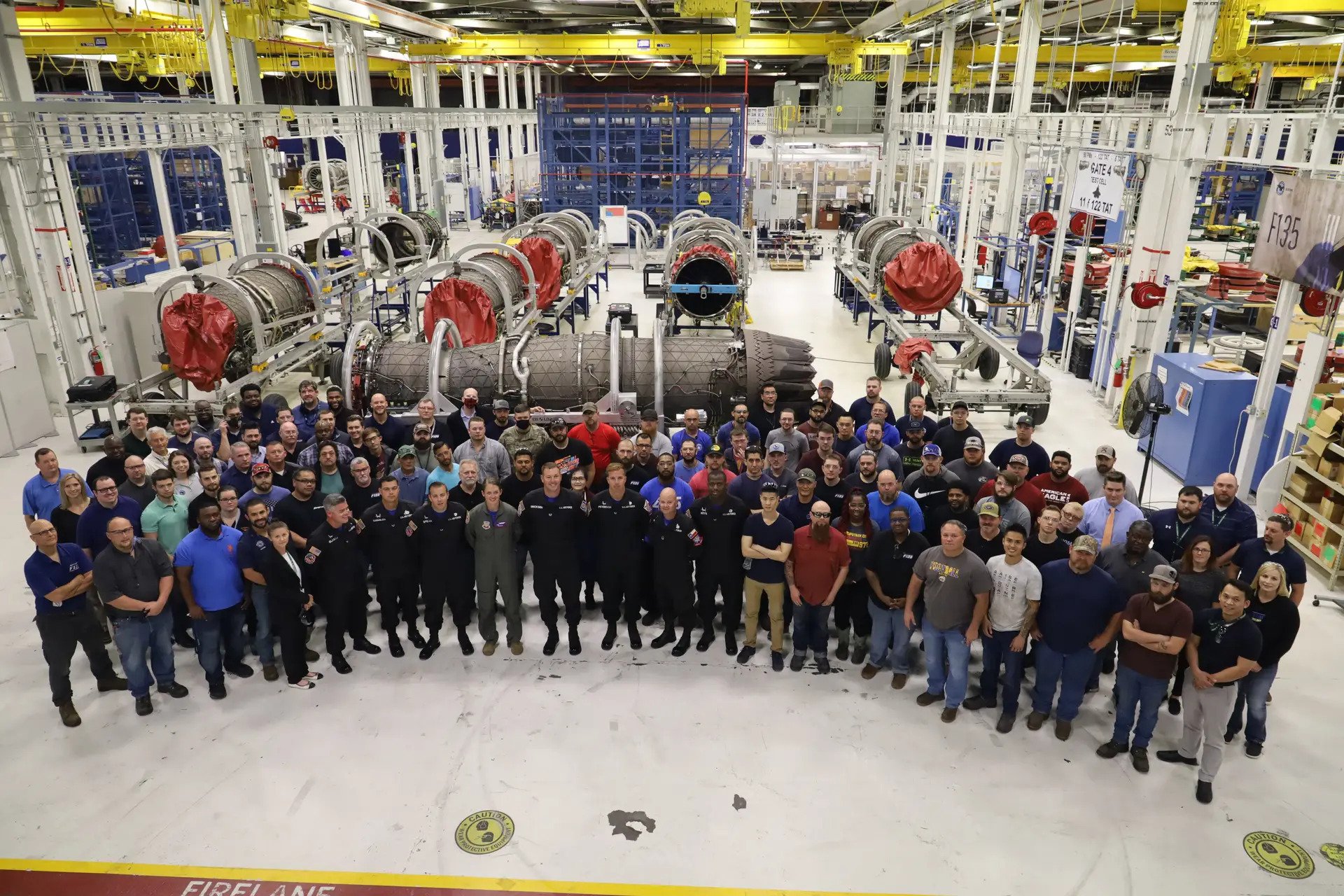
The F-35 Program Office and Pratt & Whitney officials stated that they have been in discussions to reconcile their differences and to develop a shared model, “but DOD has not ensured an agreement on a shared model with agreed-upon data inputs that would produce accurate information for planning and budgeting purposes.“
As a result of these discrepancies, GAO found that if DOD does not ensure that the F-35 Joint Program Office and Pratt & Whitney collaborate and agree on and document a shared spare parts forecasting model and data inputs for that model, “the department and the military services of the F-35 program will lack quality information for their decisions. Beyond that, without agreement on a shared model with agreed-upon data inputs, the program is at risk of decreased readiness due to a lack of spare parts.”
Pratt & Whitney estimated that the lack of spare parts “will begin to affect depot maintenance, causing about 251 engines to not be repaired as planned between 2024 and 2025.”
This would also “likely increase depot maintenance backlogs for engine modules.”
Additionally, parts shortages would affect organizational-level maintenance.
According to Pratt & Whitney officials, “shortfalls in line replaceable components will have a significant effect by 2025 on non-mission capable due to engine rates.”
Meanwhile, funding issues for the spare parts budget were exacerbated in 2019, when Turkey was prevented from purchasing F-35s over its use of Russian S-400 air defense systems.
The Pentagon said at the time it needed more than $200 million to help find new suppliers for various components for the F-35 due to the “potential application of sanctions” on unspecified “foreign countries,” which was almost certainly a reference to Turkey. You can read more about that here.
Funding Assumptions
GAO’s review of the F-35 Joint Program Office improvement plans determined that they were “highly dependent on assumptions about (1) the level of funding that the office receives during the Fiscal Year 2023 and 2024 appropriations processes and (2) addressing risks that could hinder the implementation of its plans over the coming years.”
First, F-35 Joint Program Office and military service officials told GAO that its plans were “highly dependent on receiving funding in the Fiscal Year 2023 and 2024 appropriations processes — with the exact amounts to be determined through the department’s budget development process.”
The F-35 Joint Program Office officials told GAO that these additional funds “will be necessary to avoid engine non-mission capable rates increasing to 20 percent in the next few years—over double the average rate of 8% in 2021.”
According to F-35 Joint Program Office officials, such a rate would “severely limit F-35 operations and training conducted by the military services.”
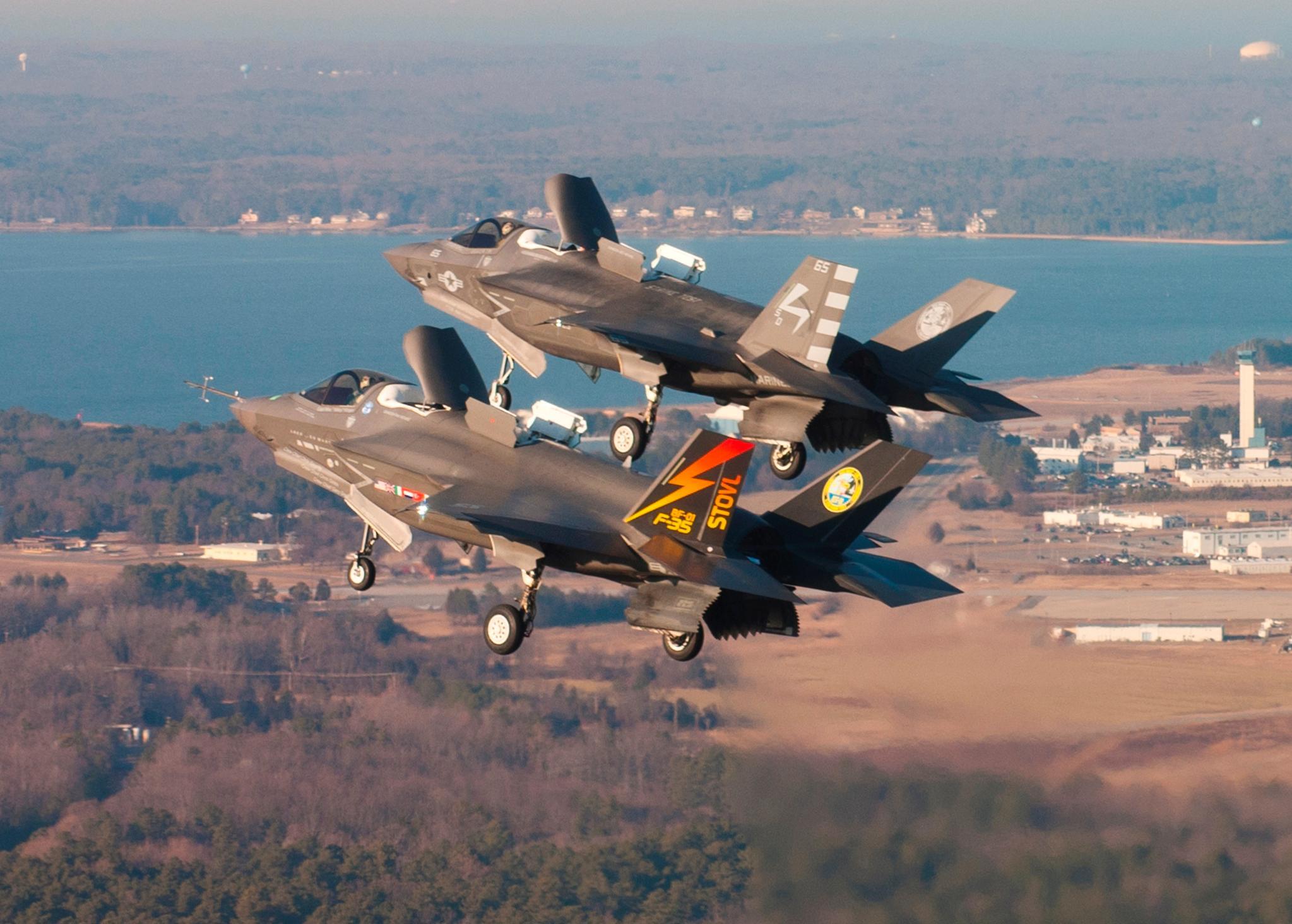
According to DOD officials, the program requested additional funding for military construction to support depot expansion and purchasing more spare parts. To increase depot capacity faster, the F-35 Joint Program Office was seeking to adjust funding planned for military construction for the Navy Fleet Readiness Center Southeast in Jacksonville, FL, from Fiscal Year 2026 to Fiscal Year 2024. This would allow them to “accelerate the number of power modules repaired in the mid- and late-2020s on an annual basis.”
Further, to support the repair of power modules across the enterprise at the expected levels in the 2020s, additional spare parts— specifically the parts used to repair and rebuild the engines in depot maintenance — are required and will be requested through the department’s budget process in 2023, 2024, and 2025.
GAO said the DOD has identified several factors that could “affect its ability to implement its plans, meet its milestones, and improve production outcomes for engine sustainment.” They include:
• Depot staffing: additional maintenance personnel will be needed to support increased capacity at existing and future depots. This requires the hiring of depot maintenance personnel to ensure that depots are operational and able to produce the expected quantities of repaired engine modules.
• Technical training of organizational and depot maintenance personnel: the DOD will need to provide additional training to its current and future maintenance personnel to increase technician proficiency, reduce rework, and improve the efficiency of repair activities.
• Depot facilities improvement: as the DOD expands repair capacity to additional depot locations, the DOD must complete facility improvements to accommodate F-35 engine repairs. This requires military construction projects, such as those in Jacksonville, FL, to be completed on schedule. If not completed on schedule, then this would delay DOD’s ability to meet repair demands.
• Support equipment at depots: adding additional depot capacity throughout the F-35 engine repair network and accelerating power module production at the Heavy Maintenance Center requires sufficient support equipment—equipment items that are required to support the operation and maintenance of the engine. Without sufficient support equipment at the depot repair facilities, repair processes are less efficient and the ability of the DOD to meet repair demands may be at risk.
• Spare parts availability: some of the spare parts used by the F-35 engine program to sustain and repair the engine require long lead times, meaning that they can take several years to produce. F-35 Joint Program Office and Pratt & Whitney officials emphasized the importance of ensuring that sufficient spare parts are available to support both the field and depot maintenance.
Changing The Metrics
One measure that can increase the time an engine can remain on an aircraft is by basing engine support requirements on the growing historical performance data of the engine and its parts.
Based on engineering data collected on the performance of the engine at this point of its life cycle, DOD and Pratt & Whitney officials told GAO that adjustments can be made to maintenance needs.
In particular, they are looking at pushing engineering limits that drive additional maintenance actions or replacing parts in the field and at the depot level.
“Such actions could decrease the demand for maintenance as well as spare parts.”
The DOD and Pratt & Whitney have been working to increase the time that an engine is able to stay on an aircraft “by expanding the engineering limits for some parts so that they do not need to be replaced as frequently.”
For example, based on extensive testing, the F-35 Joint Program Office “has taken actions to extend current limits for the high-pressure turbine blades in the power module.”
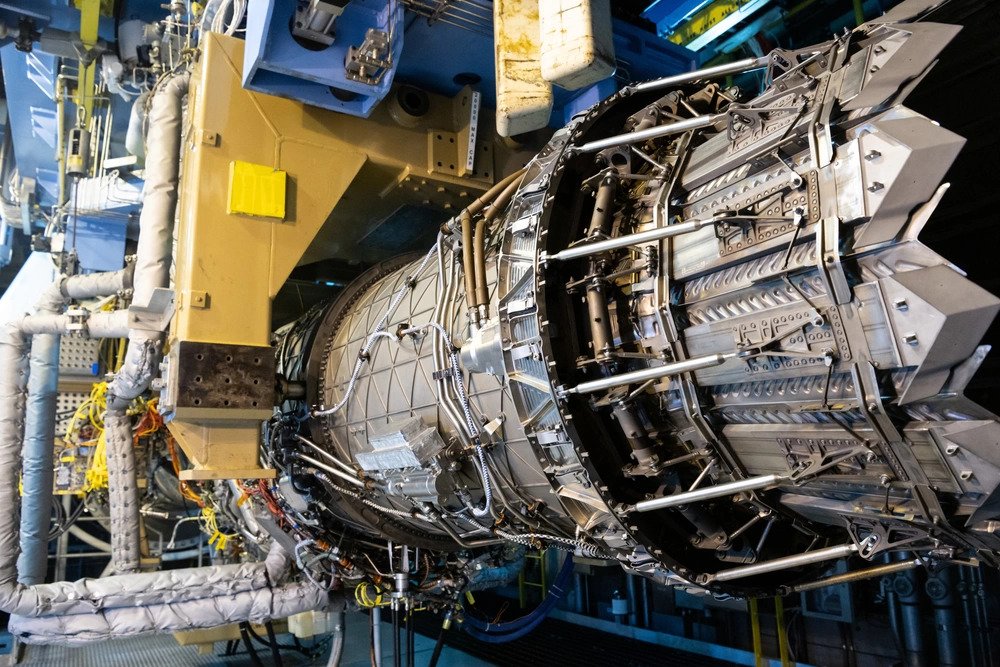
F-35 maintainers inspect the blades every 50 flight hours and make decisions on whether a blade needs to be replaced “based on technical measurements like the limits of coating loss, burn through, and cracking.”
According to the F-35 Joint Program Office, the current limits that resulted in a power module being sent to the depot for repair due to the blades “were based on conservative estimates and experiences with legacy engines. After developing and carrying out tests to assess the durability of the blades, the F-35 Joint Program Office and Pratt & Whitney concluded that the blades were more durable, even with a significant amount of coating missing, and could be safely used longer than previously assumed.”
The F-35 Joint Program Office and Pratt & Whitney also more frequently used government and Pratt & Whitney engineers “to track engine blade distress and ensure [that] F-35 maintainers were properly conducting engine blade inspections.”
These actions enabled the F-35 Joint Program Office to approve “a new set of interim limits in October 2021 for assessing coating loss, cracking, erosion and tip distress during 50-flight hour inspections.”
According to Joint Program Office officials, the F-35 Joint Program Office finalized the limits in March 2022. Under these expanded limits, “engines are able to safely stay in the aircraft for longer periods of time, resulting in fewer engine removals and fewer required repairs by depots.”
The F-35 Joint Program Office officials told GAO that the reduction in blade maintenance “would free up resources to address other engine maintenance needs, helping the engine repair network to more quickly recover to meet demand.”
The F-35 Joint Program Office and Pratt & Whitney have other similar efforts underway for other parts of the engine, and plan to complete these actions sometime this year.
“Collectively, the broadening of engineering limits for particular parts that have demonstrated longer durability could result in less field- and depot-level maintenance, and a decrease in the need to replace spare parts.”
According to Heavy Maintenance Center officials, “expanding parts limits is part of the standard process for all engines, including the F119 engine that powers the F-22 Raptor.” However, the F-35 Joint Program Office and Pratt & Whitney “also must weigh these potential changes against any safety and long-term performance issues that could arise due to expanding such limits.”
Officials from the Heavy Maintenance Center said any changes “would need to be made before the end of 2022 to mitigate potential shortages of spare parts necessary for planned depot maintenance in 2023.”

DOD’s implementation of its plans has resulted in an “improvement in its projected capacity to repair power modules and reduce the number of aircraft without operating engines over the course of the 2020s.”
Good And Bad News On Reliability
Pratt & Whitney data analyzed by GAO showed that the F-35 engine “generally has been exceeding the program’s goals” for three reliability and maintainability metrics (mean flight hours between failure, operational mission failure, and removal.)
When it comes to engine failure, a metric measuring the mean flight hours between corrective maintenance events discovered when the engine is installed, ”the F-35A and F-35C have been exceeding the goal for the metric while the F-35B has not been meeting the goal. Specifically, the F-35B is falling short of its 220 mean flight hour goal by about 40 hours (or 19%). This performance means that engines on the F-35B are requiring more maintenance due to software or hardware malfunctions than originally planned.”
When it comes to engine operational mission failure, a metric measuring the mean flight hours between failures that result in a loss of capability to perform an essential function for a strike mission such as a ground/air abort or in-flight emergency, all three F-35 variants “have been exceeding their goals for this metric by wide margins.
The F-35A Air Force variant, for example, has been exceeding its 1,400 mean flight hour goal by over 1,000 hours (or 77%.) “This performance means that the engine is extremely reliable during flight, allowing the aircraft to complete a higher frequency of missions without engine issues during the mission.”
As for engine removal (a metric measuring the mean flight hours between unscheduled removals of the engine from the aircraft) “all three F-35 variants have been exceeding their goals for this metric by wide margins.
The F-35A Air Force variant has been exceeding its 950 mean flight hour goal by almost 1,000 hours (or 105%.)
“This performance means that the engine is not required to be removed as much as anticipated for unscheduled events, reducing demand for maintenance.”
According to the F-35 Joint Program Office and Pratt & Whitney officials, “these metrics and experience have shown that the F-35 engine is extremely reliable in its performance on the aircraft.”
On the other hand, GAO found the F-35 engine has not been meeting the program’s goals for the two other reliability and maintainability metrics — mean flight hours between maintenance events and line replaceable component removals.
All three F-35 variants have been falling far short of their goal for maintenance events, a metric measuring the mean flight hours between unscheduled maintenance events when the engine is installed in the aircraft.
“For example, the F-35A has fallen short of its 140 mean flight hour goal by almost 100 hours (or 67%). This performance means that the F-35 engine is requiring a significantly higher number of maintenance events than originally planned, requiring more than the planned work for maintenance personnel at the organizational level.”
None of the three F-35 variants met the goal for line replaceable component removals either (a metric measuring the mean flight hours between unscheduled replacements of these components when the engine is installed in the aircraft.)
The F-35A Air Force variant “has fallen short of its 410 mean flight hour goal by about 60 hours (or 14%). This performance means that line replaceable components are failing more often than desired, requiring them to be removed and replaced by maintainers more frequently than planned.”
According to the F-35 Joint Program Office and Pratt & Whitney officials, “frequent failure of line replaceable components has been a major contributor to the failure to meet both of these metrics.”
However, when a component is removed an investigation is completed to isolate the root cause and to incorporate corrective action, Pratt & Whitney officials told GAO.
“DOD has developed and was in the process of implementing corrective action plans to address insufficient depot capacity to repair power modules and to reduce the demand for maintenance on the F-35 engine,” GAO reported. “DOD began implementing these plans during the fall and winter of 2020, but execution will take years and require the department to spend more sustaining the engine than it had originally planned.”
Not Meeting Desired Outcomes
Both the F-35 Joint Program Office and Pratt & Whitney officials told GAO that the F-35 engine sustainment strategy “did not align with the desired outcomes of the military services.” Specifically, GAO found the following concerns among military service officials:
Air Force officials said their missions require operable engines for their F-35 aircraft at all times and that the goal of not more than 6% non-mission capable due to engine rate was not acceptable.
Yet, since mid-2020, the Air Force has experienced shortages of operable engines due to issues with the power module resulting in aircraft not being able to fly.
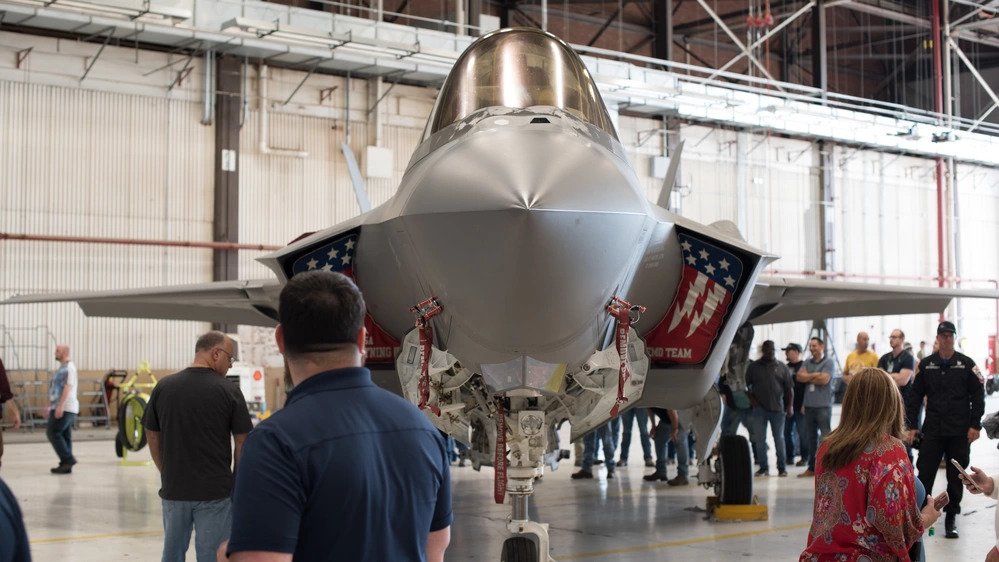
For example, in August 2021, Air Force officials told GAO that it had 35 aircraft without operating engines. In addition, they said that the F-35 is the only engine using a two-level maintenance concept, placing a heavier burden on depots performing both depot and intermediate maintenance.
As a result, the Air Force received $175 million in funding for Fiscal Year 2022 to purchase additional power modules to reduce the number of aircraft without operating engines. This amount is in addition to the funding the Air Force already provides the F-35 program office for F-35 sustainment, including F-35 engine sustainment.
Marine Corps and Navy officials told GAO that although they have not experienced the severity of engine availability issues the Air Force has at this point, they are concerned about the sustainment strategy as more F-35s are fielded across the fleet.
In Fiscal Year 2018, the Marine Corps, looking to the future to ensure engines are available for their F-35 aircraft, began to purchase its own spare F135 engines. For Fiscal Years 2019-2021, the Marine Corps spent about $186 million and purchased seven spare engines.
Navy officials also told GAO that the level of spare modules in the program is not sufficient to meet their desired outcomes—especially to maintain operational tempo during deployments.
According to Navy officials, the sea service explored additional funding for spare engines during the budgeting process for Fiscal Year 2023, but decided against pursuing that funding as it needed additional information before making a decision. In addition, Navy officials stated they would like to have intermediate-level maintenance for the F-35, similar to other aircraft in the Navy, to improve the capacity and responsiveness of the repair network.
Sustainment Costs Rising
The vast majority of funds being allocated to the F-35 program are not to purchase the jets, but to keep them flying. Out of the total $1.7 trillion projected cost of the F-35 program over the next six decades, $1.3 trillion, or 76%, will be spent on sustainment, GAO reported.
Meanwhile, the cost of sustaining just the F-35 engines jumped nearly fourfold from Fiscal Year 2016 to Fiscal Year 2020, rising from $79 million to $315 million. As a percentage of the total operating and support costs, engine sustainment costs increased from 7% of the total in Fiscal Year 2016 to 11% of the total in Fiscal Year 2020.
The F-35 Joint Program Office said those increases were due to several factors, including an increase in the number of aircraft from 154 to 357 and a 184 percent increase in total flight hours.
Additional cost increases are on the way, GAO reports, because DOD plans to begin performing scheduled maintenance on F-35 engines in 2023.
“This scheduled maintenance will significantly increase sustainment costs, in addition to generating additional demand for spare parts and depot resources. By Fiscal Year 2028, maintenance costs for the F-35 engine are projected to be over $1 billion annually.”

According to Pratt & Whitney officials, scheduled maintenance has the potential to be over 70 percent of total engine maintenance costs by 2030.
There are efforts underway to help offset those increases. The F-35 Joint Program Office and Pratt & Whitney are working to improve the affordability of engine sustainment including “improving the efficiency of maintenance activities, keeping the engine on the aircraft longer, and improving the reliability of engine parts. For example, as part of its “Keep Engines on Wing Initiative,” Pratt & Whitney is working to keep engines on the aircraft for longer intervals before they go in for scheduled maintenance events.”
Pratt & Whitney estimates that these efforts could save about $14 billion in sustainment costs out of approximately $90 billion in total engine sustainment costs over the lifecycle of the aircraft.
“However, these efforts are in various stages of implementation and approval. According to DOD officials, these efforts must be balanced with long-term engine performance to ensure that efforts to keep engines on the aircraft for longer periods of time does not increase risk of engine problems when in flight.”
Engine Inflection Point
The F-35 program is in the early stages of planning to modernize the F-35 engine.
According to F-35 Joint Program Office officials, the F-35 program will need to modernize the current engine “to provide the additional power and thermal management capabilities that are necessary to support F-35 aircraft modernization.”
To do so, the DOD is considering two options, according to Joint Program Office officials.
The first is upgrading the current engine by enhancing engine package options, produced by Pratt & Whitney.
The second is to develop a new engine through an Adaptive Engine Transition Program (AETP,) which interested contractors would compete for funds to deliver.
The enhanced engine package is a Pratt & Whitney program “that would build on the technology of the existing engine and be applicable to all aircraft variants.” It would result in “an increase in capability, such as improved range and thrust.“
However, “Pratt & Whitney representatives stated that if the enhanced engine is required to work with all variants of the F-35, some degradation in performance would be experienced to accommodate the lift fan that is part of the engine for the F-35B,” the Marine Corps variant.
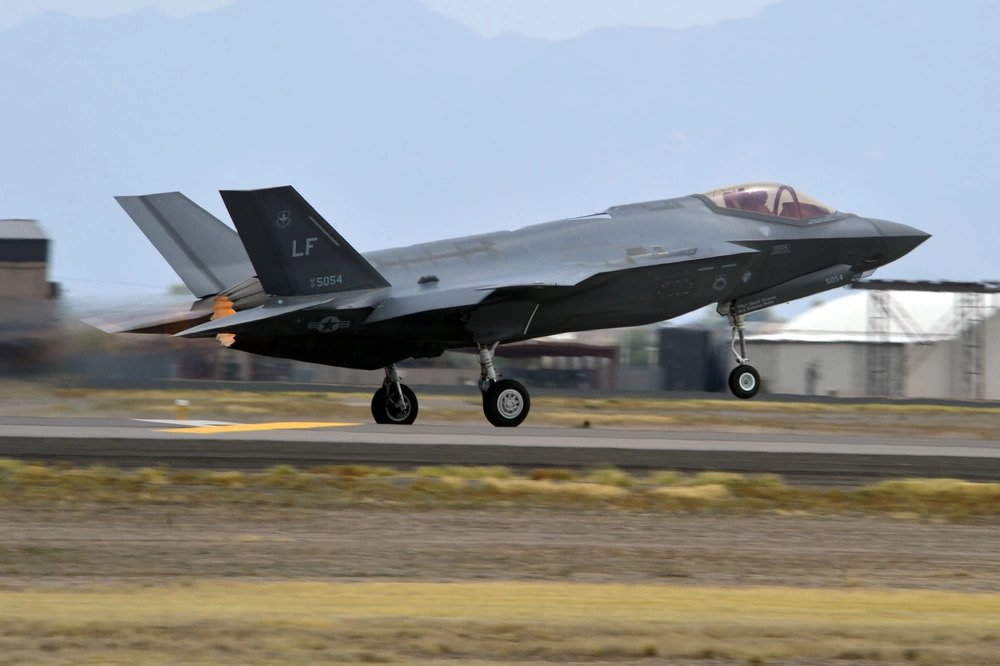
Further, these officials noted that Pratt & Whitney has also developed an option “that would increase performance for the F-35A and F-35C engines. These options would be integrated into the fleet over time, resulting in minimal effects on sustainment, according to F-35 Joint Program Office officials.”
The Air Force, meanwhile, is sponsoring the AETP approach, “which would result in an entirely new engine for the U.S. fleet of F-35As and F-35Cs.”
Air Force officials told GAO that the F-35 “is being flown harder than originally anticipated, and an upgraded engine is imperative for meeting increasing demands.” AETP “aims to produce adaptive engines that provide increased thrust during combat conditions and increased fuel efficiency during cruise conditions.”
Fielding such engines “would enable air power with increased range and additional cooling air for thermal management.”
But F-35 Joint Program Office officials told GAO this option “would pose three challenges that will affect engine life-cycle costs.”
The first is that the Navy F-35C aircraft “would likely need some sort of modification so that the new engine could be placed in the aircraft.”
The second is that “a new engine would present sustainment challenges as the program would have two different engines to sustain—one for F-35As and F-35Cs, and another for F-35Bs — likely requiring changes to the existing infrastructure that supports engine sustainment.
The third problem is that “this approach will not work for the F-35B variant [the Marine Corps variant] according to F-35 Joint Program Office officials.”
That would mean that if engine modernization is a requirement for all three variants and AETP is selected for just the Air Force and Navy F-35s, “then another engine modernization effort would still be required for the F-35B” used by the Marines. “According to program officials, this would result in two separate engine development efforts and have an effect on sustainment strategies and sustainment costs due to the fleet of F-35s operating two unique engines.”
Recommendations For Improvement
In its latest report, GAO recommended that the Defense Secretary should “ensure that the F-35 Joint Program Office, in collaboration with the military services, assesses and updates the F-35 engine sustainment strategy, including its goals and the necessary actions to achieve its goals—such as the required number of spare engines and modules and the levels of maintenance and capacity needed to repair the modules.”
Those assessments and any corresponding decisions and actions “should be documented and take into consideration engine sustainment costs and modernization plans.”
In addition, the Defense Secretary “should ensure that the F-35 Joint Program Office collaborates with the military services and Pratt & Whitney on developing a shared model for spare part forecasts, reaches agreement with the military services and Pratt & Whitney on a model for spare parts forecasting, and documents that agreement to ensure common understanding of the model.”
Both DOD and Pratt & Whitney concurred with those recommendations.
The DoD said that it is already “reviewing and revising a new propulsion sustainment strategy.”
Pentagon officials did not respond to a request by The War Zone to explain the status of this. We will update this story if that information becomes available.

In a statement, Pratt & Whitney said they also concurred with the GAO recommendations.
The F-35 engine sustainment strategy, “which is designed, funded, and contracted for a 6% Non-Mission Capable (NMC) rate is currently not aligned with warfighter readiness expectations,” according to Pratt & Whitney. “P&W has experience successfully executing many different readiness constructs across its product portfolio and is poised to adapt based on user needs. Altering the current construct requires alignment across the enterprise.”
As for the spare parts needs forecasting “Pratt & Whitney has proven forecasting and modeling tools to support fleet planning. Over the past 12 months, P&W has worked with the Joint Program Office to align the ground rules and assumptions of these forecasts. Changes in funding availability for timely procurement of spare parts remains a challenge. P&W continues to focus on identifying spare parts requirements that meet engine availability and readiness levels.”
Given the cost to purchase and maintain the fleet of F-35s, and the ongoing problems with keeping it flying, keeping a close watch on the program will remain a priority for watchdog organizations like GAO and Congress.
In April, the House Armed Service Subcommittee on Readiness Chairman John Garamendi, a Democrat from California, vowed to “raise holy hell” until the program is brought back in line with operational requirements.
It remains to be seen if and when that will ever happen.
Contact the author: howard@thewarzone.com
Author’s note: This story has been updated to reflect the per-unit cost of the F135 engine.
